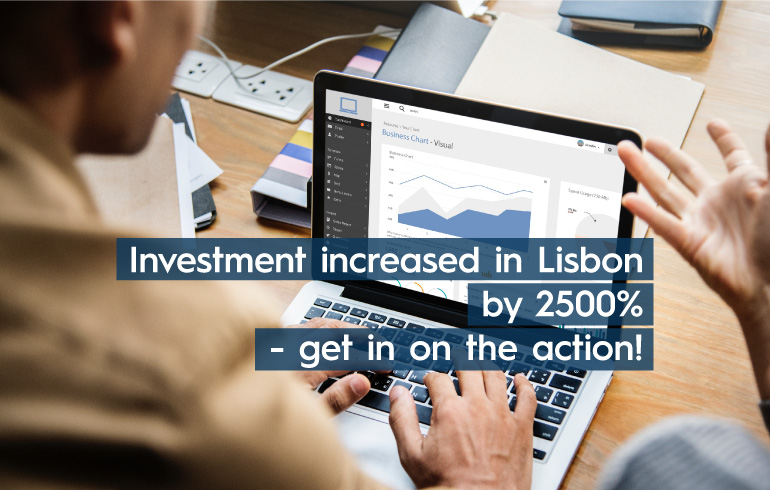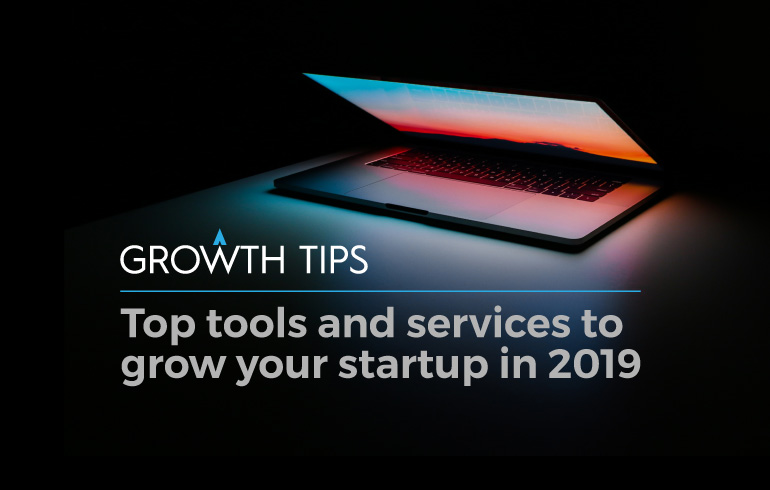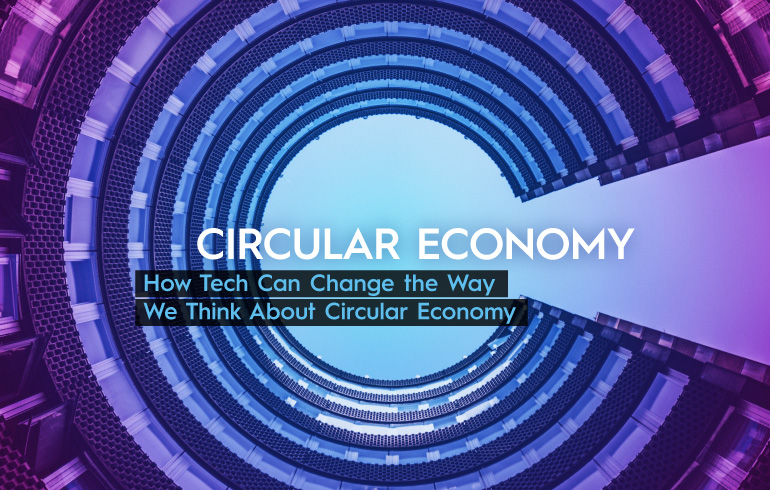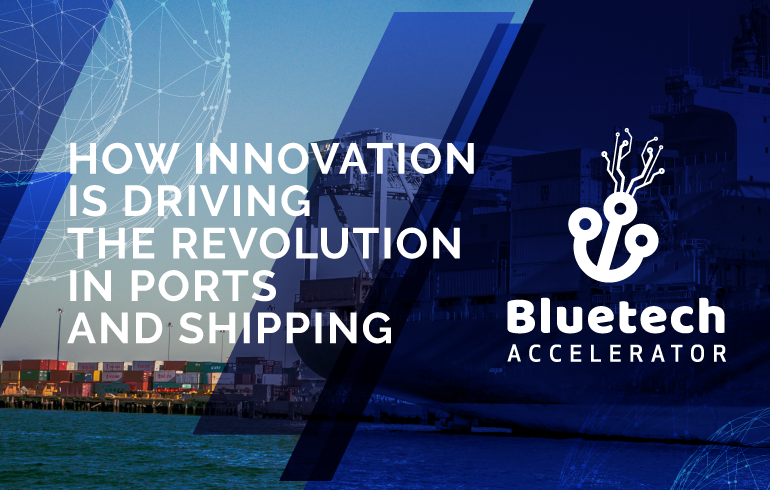
by silvia | Mar 14, 2019 | Startups, Uncategorized
When your startup is looking for investment there are a lot of things you should consider. We break down the steps to take to meet investors the right way.
1. Look for the Right Investors
This is easily the most important part of the process. If all you need is money, then a bank is the easiest way to go. If you’re looking for an investor that means you’re looking for a long-term business partner. When looking for investors, take the time to consider what kind of investor you are looking for:
- Sector: Are you looking for an investor that focuses on your particular sector of business?
- Investment patterns: What type of investments does the investor usually make? Seed, or series A/B? Does it match the phase your startup is in, or what you’re looking in the future?
- Region: Are you a global startup, or are you focusing on a region? Is the investor also focused on a particular region?
- Are you looking for someone with experience and contacts in a particular sector that you want to reach?
This will help you have a better understanding of what kind of investor you’ll need and how do you know if you’re a match.
2. Do some healthy stalking
After you considered and defined all the point in the previous step, it’s time to look for people who fit your criteria and preferences. Don’t be lazy and do your research! Do not approach investors randomly – research their past ventures and investment portfolio, and try to understand if they are a good fit with your company.
Approach leaders and connections within the sector you’re working on and ask for recommendations.
3. Network
This one is pretty simple – to meet investors you need to be where they are! Join the same events, participate in roundtables and join conversations about the industry.
Certain events, like the Lisbon Investment Summit, happening in Lisbon on June 5-6th, are the perfect setting to join discussions and meet the right people.
Don’t forget the 6 degrees of separation – meet as many people as you can and engage in conversations with them. You might meet someone who can introduce you to an investor that might be a great match.
4. Be considerate of the person
Most investors won’t take cold emails, so make sure to get an introduction within your network. Also, don’t spring your business plan on them – take the time to get to know them and understand what they usually work on and what are they looking for at the time. Make you sure you are bringing something valuable to the table.
5. Build a relationship
Let’s be real: no one invests in a complete stranger. You have to understand that an investor is investing as much in you as in the business. So make sure to let them know you are a reliable person, who accomplishes what he sets out to do. After initial contact, if there’s interest, keep them posted on your work and the results of the business.
Keep joining the conversations the sector is having and show that you are an expert in what you do.
In the end, it’s important to realize that there must be a match between the interests and goals of the entrepreneur and the investor. Don’t be shy to say what you want from them (mentorship? introductions?), and what you can offer in return. None of you should ask for something they’re not willing to bring themselves – it should be an equal partnership that is mutually beneficial.

by silvia | Mar 1, 2019 | Corporates, Investors, Startups, Uncategorized
It has been noted lately that even though founders do not decide where they base their company on investment flows, but that investment flows adapt to the popularity of cities chosen by founders – and it’s already showing in the city of Lisbon.
According to data from Dealroom and Startup HeatMap, Lisbon has seen an increase in investment in 2018 of > 2500% comparing to the previous year. It’s an unprecedented growth, that makes Lisbon jump 17 ranks on the European Startup HeatMap, currently ranking 5th.

According to data, the sum of investments in Lisbon was €358M, the most noteworthy companies invested being OutSystems, Unbabel, Prodsmart, Undandy and Valispace, with a percentage of 60% of foreign investors.
Impressed yet? Get in on this action: join us at Lisbon Investment Summit, a slightly unexpected startup conference gathering the most promising startups, innovators and seasoned investors in Lisbon on the 6th and 7th of June.
Investor Full Access and Investor Ultimate early-bird tickets are already sold out, so hurry up and don’t miss out – get your tickets for #LIS19.

by helder | Feb 22, 2019 | Startups, Uncategorized
Launching a startup isn’t just about developing a website or an app and taking it online. There are a lot of procedures and operational processes to take care of, in order to be able to scale and succeed.
There are many tools and services you can use, not only to help minimize the costs, but also to save time, optimize processes, and make the operation smart and smooth. From project management to data and analytics, for every crucial element of running and growing a startup, there’s a tool.
So, we have curated this list of the most useful tools available. Since one of the concerns of every startup is to keep the costs at a minimum, all the tools and services listed are free to start. Using these tools and services can help startups grow seamless for years.
Google Marketing Platform
Google Marketing Platform consolidates a set of tools for better collaboration, data sharing and analytics. It consists of Analytics, Data Studio, Tag Manager and Optimize.
Google Analytics alone is a winner, but when integrated with Tag Manager, Data Studio and Optimize it turns into a monster of seamless data and analytics processes:
- Set Analytics to collect data;
- Use Data Studio to build dashboards to analyze and process that data;
- Use Tag Manager to manage all your tags without editing code;
- Take advantage of Optimize to engage your visitors, create personalized experiences and test what works best.
Killer feature: The seamless integration between the four features makes it easy to collect and visualize visits and traffic data, and to create custom funnels and metrics. Analyze your audience’s behavior to understand their flow and segment them to create a target and target-specific ads.
Hubspot
Every market effort your startups makes, from emails and newsletters to blog posts and social media, should be feeding leads to your marketing funnel – and each of those should be helping you grow your customer base. That’s where Hubspot enters.
HubSpot is a software platform that helps you generate leads, close deals, manage your pipeline, and delight your customers, offering a suite of products for customer relationship management (CRM), content management (CMS), marketing, sales, and customer service.
Killer feature: The possibility to keep track of everything from your contacts and prospects, to blog posts, to email and social media campaigns, to leads and deals, on the same platform.
Trello
Trello is a team collaboration tool that lets you organize anything and everything to keep your projects on track.
Trello allows you to capture different “cards” and organize them into lists and boards You can share entire boards with your team and assign specific cards to teammates. Instead of sending out emails to give updates, everyone can add comments directly to a card, meaning that communication stays tied to a task and it’s not missed by team members.
Killer feature: Trello can be adapted to fit your workflow or your team. Use it to plan complex projects or to plan what you’re eating for dinner – its beauty is in its flexibility.
Slack
Slack is a platform for team communication: everything in one place, instantly searchable, available wherever you go. Offering instant messaging, document sharing and knowledge search for modern teams, Slack is replacing email and IM and everything between.
Killer Feature: Slack offers a simple way to talk in groups or in private, but the integrations are what makes it indispensable. Drag in a file, share a Google Drive document, YouTube video, Tweet and much more, and Slack will show a preview right along in your chats. You can integrate other useful tools other apps, like Zoom (for video chats) or giphy (for fun!).
Airtable
Airtable is a fast and flexible way to create tables to keep track of anything, from sales leads to vacation planning to inventory management. You can organize anything with Airtable, a modern database created for everyone.
Databases are the beating heart of almost every modern business. CRMs, project management tools, content management systems, accounting tools, and more often than not a database with a form to enter data and ways to view it. If you already have an idea for the database you need, it’s simple to turn it into a working tool for your team in Airtable.
Killer feature: It’s easy enough for everyone to use it without training but powerful enough to organize any amount of data you need.
Dropbox
Dropbox lets you store your files online, sync them to all your devices, and share them easily. Share a folder inside your team’s Dropbox – anyone can add files and they’ll magically stay synced for everyone.
Killer feature: The new Dropbox Paper app also lets you collaborate on texts. It’s an online writing app where everyone can write together in real time, add comments and replies for feedback, and collaborate without having to make sure everyone has the same version of Word.
Canva
Canva gives businesses and professionals a very simple design platform that enables them to create amazing and professional quality graphic designs.
It’s a user-friendly, reliable design tool that makes it easy to take an idea and turn it into a stunning design. With a wide range of available formats – from print to social media – Canva allows anyone without a design background to not be hindered by ugly graphics.
Killer feature: The simple drag-and-drop design tool and a vast collection of over 1 million photographs, graphics, and fonts, can turn anyone into a decent designer.
Buffer
Manage your social media marketing together with Buffer‘s tools to schedule posts, analyze performance, and publish in half-dozen social networks from just one app.
It’s a scheduling tool to keep your social media profiles up-to-date without you posting all the time. Connect your Twitter, Facebook, LinkedIn, Instagram, and Pinterest accounts, set a publishing schedule for when you want to share new posts, then add a queue of things to post. Buffer will do the rest, sharing your posts and keeping track of how they do automatically.
Killer feature: Automate your social media management, by sharing scheduled posts to multiple social media accounts from one place and viewing engagement and activity analytics.
Zapier
Zapier is an online platform that connects various apps together to automate workflows easily for business and productivity.
With its powerful technology, users can move information automatically between web apps, so they can focus on the more important work at hand. The ultimate aim is to empower businesses to create automatic processes and systems.
Killer feature: Automatic storing of files via the workflows – no more searching for a document in your emails.
In case we might have missed any useful tool and service your startup uses, feel free to mention it in the comment section below to make this list more resourceful for other entrepreneurs and readers.
And to stay up to date on tips and events: subscribe to our newsletter.

by silvia | Feb 21, 2019 | Corporates, Investors, Startups, Uncategorized
The circular economy has been gaining momentum in recent years. The urgency created by the impact of consumerism on the planet’s environment has created urgency in governments and consumers to support and make the necessary infrastructure available.
So far, the development of tech has been focused on supporting and improving the traditional solutions that already exist and enable circular economy: waste collection, sorting, and recycling.
However, new developments and advanced technologies can and will bring the next level of innovative solutions to enable an (almost) complete circular economy.
Augmented Reality
Augmented reality can be useful to in several levels of the circle. This tech can help several activities performed become more efficient, reducing its costs. It’s also useful in the prototyping processes by visualizing design prototypes in 3D, and testing and redesigning manufacturing processes, reducing or eliminating entirely the use of some raw materials.
In real life:
Scope, a Canadian firm specializing in AR solutions for industry, has developed a software tool called WorkLink that can transform traditional paper-based work instructions into Smart instructions, It uses animated, intuitive, 3D computer-generated imagery that overlays on top of the real world.
Internet of Things
Internet of Things (IoT) systems can be an enabler of circularity, offering assistance in the process of resource recovery. Smart objects can give info about their location, status or need for upgrade. IoT can also be used in predictive maintenance (determining the condition of in-service equipment or machinery in order to predict when maintenance/servicing should be performed) to maximize product life span and reduce costs.
In real life:
San Francisco and London have installed solar-powered automated waste bins that alert local authorities to when they are full; creating ideal routes for trash collection and reducing operational costs by 70 percent.
Big Data
Big data play a big role in making industries and supply chains more efficient. It can be very useful for route optimizations, reducing risk, streamlining manufacturing and making supply chains more transparent, by enabling businesses to make decisions based on accurate data-driven insights.
In real life:
DHL has a Big Data Business Platform that supports all its activities. It uses data collected by sensors, on top of getting data from the financial industry, public authorities, retailers, SMEs, and its own research. DHL uses the technology for route optimization, strategic network planning, operational capacity planning, risk evaluation and resilience planning, customer loyalty management, and environmental intelligence (statistics on pollution, traffic density, noise, parking spot utilization, etc.)
Platform Economy
Platform Economy refers to digital marketplaces. Amazon, Alibaba, etc, already changed the way consumers buy industrial products. It’s a concept that can be applied to help implement what is called ”Industrial Ecology” – the concept that the waste of one industry can be the input of another one.
In real life:
Organix an online marketplace for organic waste. It links organic waste producers with biogas operators to facilitate energy recovery from such waste.
Product as a Service
This is a business model in which manufacturers retain control of the product throughout their lifecycles – instead of selling the products, they lease them to costumers. This means that the responsibility of disposing of the product at the end of its lifecycle shifts from the consumer to the manufacturer. It also opens the possibility of recycling or refurbishing the product to give it a longer life span.
In real life:
DriveNow is a sharing service that offers a fleet of the latest BMW and Mini vehicle models. Users can locate a car and unlock it using an app, use it, then park it again.
Blockchain
Famous for its use in Fintech, Blockchain represents trust in transactions, since there is no third-party intervention. It can be leveraged by the circular economy too: blockchain technology can be used to make supply chains more transparent by tracking products from the manufacturers to the shelf. This access to information can help customers be informed about how the products were made and shipped, empowering them to make environmentally friendly decisions.
In real life:
Provenance uses blockchain to make supply chains more transparent, It builds a traceability system for materials and products. It gives consumers information about suppliers by tracing the origins and histories of products.
Upcycling
Circular Economy is all about closing the loop, but unfortunately, not everything can be recycled back to a raw material state to be re-used. Upcycling enables creative re-use of products for different purposes (without breaking them down). Companies can find alternative inputs for their products, and customers can find ways to re-use their products once they’ve reached the end of their lifecycles.
In Real Life:
Samsung has introduced Galaxy Upcycling, which is a program that enables the embedding of IoT in old smartphones to be used in households. On their website, they suggest ideas for using the phones, and they offer the software and the hardware (sensors). For example, the device could be used to monitor fish tasks, check conditions, and give food to fish while the owner is away.

by silvia | Feb 19, 2019 | Corporates, Investors, Startups, Uncategorized
Often seen as a stagnated industry, the ports and shipping industry is now waking up to the challenges they face, and the new opportunities based on technology that is in their reach. Their importance in the geo-spatial economy is now as important as it was in the Silk Route Map.
Why is the ports revolution happening now?
- Pollution: It is, unsurprisingly, the biggest motivator towards the necessity to innovate in this area. Although it has been banned in every other industry, the shipping industry is still allowed dangerous low-grade, high-sulfur fuels (cheaper than low-sulfur fuels) – it produces 13% of the world’s sulfur emissions and 15% of nitrogen oxides.
- Regulation: Health is the main concern behind the International Maritime Organization’s decision to slash the permitted sulfur content in ships’ fuel from 3.5 to 0.5 percent. It is estimated that shipping’s cheap fuels cause around 400,000 premature deaths a year through heart and lung diseases and asthma in 14 million children, and the use of cleaner fuels could reduce these number by half.
- Ocean protection: The world has awakened to the destruction of our oceans and maritime life, and its implications in the economy.
- Maritime accidents: the need for using technology to reduce and extinguish maritime accidents that result in the loss of money, life and maritime species.
Three big innovation trends emerging
Autonomous shipping
The biggest impact of tech in shipping will have to do with the automation of shipping and autonomous ships. 78% of maritime professionals expect the first autonomous ships in the next 10 years and 56% believe that autonomous ships will be commonly deployed in merchant shipping in the next 11 to 20 years.
Autonomous shipping would bring great benefits to the industry: they could serve isolated islands, inhospitable routes navigated and remote areas accessed, much of it with diminished risk to seafarers. And since 80% of maritime accidents are the result of human error, autonomous shipping would be a safer solution than crewed shipping.
Ports of the future
It’s safe to say that the ports industry is no longer a stagnated one. Ports are becoming hubs connecting sea and land and striving for efficiency, supporting customers, promoting frictionless trade and enabling highly efficient processes for cargo movement. The goal is clear: to maximize efficiency and support international supply chains.
“Modern ports have become multimodal distribution megahubs which link sea, river, canal, road, rail and air transport routes, vital for international trade and linchpins for the global economy.”
Racounter.net
Digital & Robotics
Digitization in its many forms will be a key asset of the revolution happening in ports and shipping. Data, information and how it’s handled will be at the core of the way ports operate in the future.
Not only robotics will take physical tasks away from humans (directing them towards more safe and high skilled jobs), they will also embark on tasks that cannot be undertaken by humans (deep-sea exploring, for example).
Complex systems of Internet of Things (IoT) sensors to collect data around tidal streams, wind strength and visibility, will help reduce vessel waiting times and automatically guide crewless ships. The availability of such data-driven analytics increases operational efficiency by improving tactical decisions. Further uses of such technology include providing shippers with greater visibility into market and pricing trends and helping minimize the dramatic boom-and-bust cycles that have traditionally plagued the industry.
The importance of the Blue Economy
The revolution in ports and shipping is closely connected to the desire to drive the blue economy. The blue economy represents the exploitation of ocean resources and preservation of the marine environment for economic growth. According to the Foresight Future of the Sea Report, the gross value added of the blue economy is projected to double to $3 trillion by 2030. This value is linked to industries such as trade, tourism, aquaculture and renewable energy.
The benefits of this growth are important to sea connected countries: the creation of jobs, reducing poverty and building resilience against environmental challenges, like natural disasters and climate change.
Stay update on more Blue Economy news – subscribe to our newsletter.






